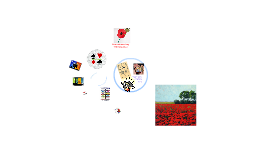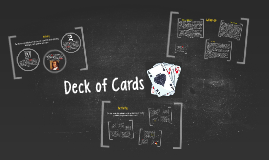Deck of Cards
Transcript: hearts - What is the probability of drawing a 2? Yes, 3/10 chance of drawing a 2. - What is the probability of drawing a heart? Correct! There is a 2/5 chance of drawing a heart from the mini deck. Now for a curve ball, if we took the full deck that is missing the cards from our mini deck what is the probability of drawing a 2? Our first step is to determine how many 2's are left in the full deck. If we have three 2's in our mini deck that means there is only one left in the full deck. With this in mind, figure out the probability fraction. Great job, the probability of drawing a 2 from the full deck is 1/42. ...this guy, Pierre de Fermat, who was a fellow mathematician. These two exchanged letters and discussed the question that had been asked by de Méré along with other probability problems. These two men are credited for founding the probability theory. 2 diamonds Future Impact Finish up with the second to last person's second turn, then pass the deck to the last person and look up toward the board. That was fun right, but how do we learn probability from drawing cards? Can anyone tell me what probability is? How do we find it? You are on the right track. We figure out the total number of that which we are taking from, in this case it is the total number of cards. How many cards are in a deck? Fifty-two, correct. First things first! I am going to split you up into groups of three by giving each of you a number, 1 -4. With that in mind, I want each group to tell me the card they drew the most. Starting with group 1. First give me the top five ranks that occurred most and then the number of times each suit was drawn. clubs Brief History of Probability (n.d.). TeacherLink.org. Retrieved from http://www.teacherlink.org/content/math/interactive/probability/history/briefhistory/home.html The Vast Use of Probability in Real Life (2012). MIT. Retrieved from http://www.mitaoe.ac.in/the-vast-use-of-probability-in-real-life Mathematics Standards (2015). Arizona Department of Education. Retrieved from http://www.azed.gov/standards-practices/mathematics-standards-2/ Ok, we will start by first we figure out how many Jack's, 3's, 5's, 10's, and 2's there are in the deck. There are four cards for each rank, so how many Jack's, 3's, 5's, 10's, and 2's are in the entire deck? Take that number, 20, and put it over the total number of cards in the deck, 52. Don't forget to simplify your fraction. Now that you know the basic steps for figuring out the fraction that shows the probability of drawing a card of those four ranks, you need to figure out the fractions for each of the suits. How many suits are in a deck? That is right and each rank has one of each suit. With this is mind, how many hearts are in one deck? 6 Return to your regular seats and we will do another activity until the end of class. I am going to take one deck and shuffle it well. Now I will randomly take ten cards without looking at them and this will become our "mini deck" which I will put up on the board. Deck of Cards I plan of doing a related activity to the one presented above where the students play five-card draw and the move onto five-card stud. Not gambling, of course, but simply working through a couple of hands figure out the probabilities of getting the cards they need. –For anyone that does not know these poker games; five-card draw: five cards are dealt out, the players each have an opportunity to get rid of any cards that do not benefit their hand, and have them replaced with new cards from the deck - best hand wins. Five-card stud: two cards are dealt face down followed by one card face up. Everyone bets (or in our case probabilities are made) and another card is dealt face up, and then the fifth card is dealt face down - best hand wins. Standards For example... Has the first person in each group drawn five cards? Ok good, and have you recorded what cards you had? Great, now put your cards back and pass the deck to the next person on your right. Repeat the process of drawing five cards and recording what you drew. Continue this until everyone but the last person has gone twice. Now let's figure out the probability of drawing these cards based on their rank. For those that don't know, the rank of a card refers to the face value of that card. So ace, 2, 3.... jack, queen, king. Where do you believe we should begin? Now that you have your graphs done, I want you to make a prediction about what five cards will be drawn next. When you have finished your predictions the last person in the group may make the final draw. Don't forget to record what is draw. - What were the results of your final draw from the deck? I will then write the results up on the board. - Now I want each of you to tell me what your predictions were? - How did they match up with what you drew? ...by this guy, Chevalier de Méré, who was a nobleman that liked to gamble. He had developed an approach to calling dice that worked well. He got tired of that approach and attempted to

















